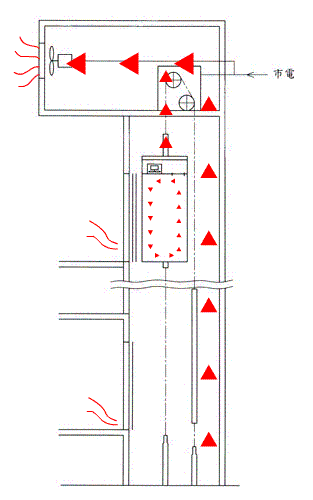/ Center Introduction
/ Organization
/ Center Introduction
/ Organization
/ Center Introduction
/ Organization
/ Center Introduction
/ Organization
/ Center Introduction
/ Organization
/ Center Introduction
/ Organization

Items
董事長
Ventilation system of building intelligent lifting equipment
Creative background
The conventional elevator system only provides the air needed in the elevator car and circulates it internally. If the elevator is crowded with people, the virus concentration in the air is high, which becomes a breach in epidemic prevention. Because the elevator has the convenience of quickly transporting people, in the event of a fire, based on the safety considerations of firefighting, the power of the building will be cut off quickly, making some elevators that could be used for transportation to achieve rapid evacuation and escape The tool suddenly became an obstacle to escape. Even some people who were originally riding in the elevator were forced to be trapped in the elevator waiting for rescue due to power interruption, or were forced to escape to a dangerous floor. For this reason, general fire prevention education teaches that people should not use elevators as a tool for escape when a fire occurs, so that elevators that can be used to quickly evacuate people cannot be used properly.


Traditional elevator device


Traditional elevator installation-in case of fire
Work description
The present invention relates to a ventilation system for lifting equipment. More precisely, it relates to a smart building ventilation system for lifting equipment that can reduce air particles from entering the elevator hoistway. In addition to filtering out external air pollutants or particles, it can also The transfer of heat in the air and the effect of temperature regulation can further install anti-smoke filter materials to reduce the dense smoke generated by combustion from entering the elevator room. In addition, the intake and exhaust devices can be electrically connected to the control center. The control center controls the operation of the intake and exhaust devices based on weather monitoring data (such as temperature, aerosols) or the air quality of public spaces near the elevator lanes. Adjustable air supply or forced air supply can maintain better air quality in the engine room or lift lanes. The air pressure can also be adjusted to create a safe escape environment.


Weekday operations


At the time of fire
Function and practicality
-
After the air enters the computer room through the water energy conversion device, the particles or pollutants in the outside air will be washed by the mist generated by the water energy conversion device to remove impurities in the passing air
-
The heat in the air can be transferred, so that the particles or pollutants in the outside air are washed, and the temperature can be further adjusted.
-
Install anti-smoke filter materials to reduce the dense smoke generated by combustion from entering the elevator room. It also provides air with denser moisture and compulsory air supply to form a positive pressure environment in the elevator to create a safe escape environment.
-
According to the weather monitoring data or the air quality of the nearby public space, adjust the air supply to maintain better air quality in the engine room or lift lanes
Degree of commercialization
-
Architects and builders of the present invention are expected to sign a memorandum of cooperation
-
It has been planned to be displayed in the smoke experience area on the fourth floor of the Disaster Prevention Science Education Hall of the Fire Department of Taipei City Government
Applied in epidemic prevention
The conventional elevator system only provides the air needed in the elevator car and circulates it internally. If the elevator is crowded, the virus concentration in the air will also increase, which becomes a way of disease transmission.


Traditional elevator device
The intelligent ventilation system for building lifting equipment of the present invention can reduce the entry of air particles into the elevator hoistway, filter out external air pollutants or particles, and some airflow in the elevator can enter and exit, which can dilute the virus concentration in the air , Isolate the chance of disease transmission.


Building Smart Lifting and Ventilation System
Applied to disaster prevention
When a fire occurs, based on the safety considerations of fire fighting and extinguishing, the electricity of the building will be cut off quickly, making some elevators that could be used to transport people and escape tools quickly become obstacles to escape, even some original ones. People in the elevator were also forced to be trapped in the elevator waiting for rescue due to power interruption, or forced to escape to a dangerous floor.


Traditional elevator installation-fire occurs
The intelligent building ventilation system for lifting equipment of the present invention can transfer heat in the air and has a temperature adjustment effect, and can be equipped with anti-smoke filter materials to reduce the dense smoke generated by combustion from entering the elevator car. It also provides air with denser moisture for regulated air supply or forced air supply to maintain better air quality in the engine room or lift lanes. The air pressure can also be adjusted to create a safe escape environment.


Building Smart Lifting Ventilation System-Fire Occurred
